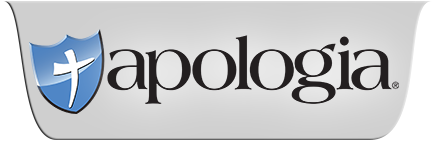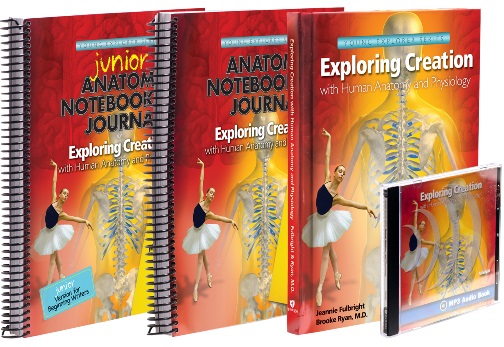
Science is one of my children's favorite subjects. This school year we have had a really hard time with it. The curriculum I chose was not a great fit for us, and it became a chore to get through our science lessons each week. We were more then ready for a change and and were very excited to have an opportunity to review Exploring Creation With Human Anatomy and Physiology from Apologia. For our review we received:
Exploring Creation With Human Anatomy and Physiology Text
Exploring Creation With Human Anatomy and Physiology Notebooking Journal
Exploring Creation With Human Anatomy and Physiology Junior Notebooking Journal
Exploring Creation With Human Anatomy and Physiology MP3 Audio CD

Exploring Creation With Human Anatomy and Physiology is part of the Young Explorer Series for elementary students. It was written by Jeannie Fulbright with the help of Brooke Ryan, M.D. The lessons are Bible based and use reading, narration, copywork, notebooking, and many hands on activities to help your student retain what they have learned. There are 14 lessons in the book including:
Introduction to Anatomy and Physiology
The Skeletal System
The Muscular System
The Digestive and Renal Systems
Health and Nutrition
The Respiratory System
Life in the Blood
The Cardiovascular System
The Nervous and Endocrine Systems
The Nervous System Extended
Your Senses
The Integumentary System
The Lymphatic and Immune Systems
Growth and Development
The main component of the course is the 265 page hardcover textbook. The book contains all of the readings that the student can read on their own, listen to someone read aloud, or listen along with the MP3 Audio CD. The book contains many photographs, illustrations, and diagrams to help explain the readings. The book also has the Try This activities, Experiments, What Do You Remember questions, Notebooking Activities, and Creation Confirmation sections. There is no separate teacher book, everything you need to teach the course is contained in the text. Answers to the What Do You Remember questions are in the back of the book.
The MP3 Audio CD contains the full text read aloud by Jeannie Fulbright with the exception of The Try This activities. After the section before the Try This is read she says now you are ready to do the Try This activity on page_ (whatever the page number is.) Students can follow along in the textbook with the Audio CD or choose to listen after reading the text for a review. Jeannie Fulbright has a very pleasant speaking voice and speaks very clearly and at a good pace. This does need to be played in something that is MP3 compatible. We play ours on the computer. The MP3 CD is a great bonus for homeschoolers who are learning on the go, homeschooling mamas whose voice needs a break, or for auditory learners that simply learn better by listening.
There are two different levels of notebooking journals that you can choose from to accompany your study. The Junior Journals are for younger learners around grades K-3. The Regular Journals are for older learners around grades 3-6. Both of the journals are spiral bound and contain a suggested schedule to follow in the front of the book. Both journals have many of the same activities such as the mini-books, places to record fascinating facts, activity documentation, copywork pages, diagrams, and More to Explore pages. There are a few main differences between the Junior Journal and the Regular Journal. The Junior Journal has 2 coloring pages for students to color while listening to the lesson being read. The lines in the Junior Journal to write on are primary lines (the ones with 2 solid lines and a dotted line down the middle), and the copywork is a little shorter. Also, the Junior Journals do not include the What Do You Remember questions and instead of a long vocabulary crossword it has shorter vocabulary activities. When students need to complete a diagram in the journals, the Junior Journal has pointers pointing to the diagram and lines showing the number of letters needed with the first letter given. These journals are a great compliment to the course and a wonderful way to keep everything you have learned in one place and look back at it whenever you want to look over what you have learned.
I have been using Exploring Creation With Human Anatomy and Physiology with my 1st ,3rd ,5th, and 6th graders. When I found out I was chosen for this review, I decided to go ahead and order the science kit to go along with the curriculum so I could be sure I had all of the supplies I needed to do the experiments and I'm so glad I did! Not having to worry about gathering supplies has made it much easier to just open and enjoy the curriculum. We have been following the suggested schedule in the notebooking journal working 2 days per week. At this pace a lesson takes around 2 weeks to complete. We have completed lessons 1 and 2 and in the middle of lesson 3 on the muscular system.
I love how the text is written to the student in a way that is easy for them to read and understand. The course does a great job or presenting the information in a way that is not watered down while at the same time using examples that children can understand. I love that it is Bible based and shows many examples of creation confirmation throughout the book. The course is very flexible. You can choose to follow the suggested schedule or adjust it to suit your needs. I think the suggested schedule is broken down very well giving a good amount of activities for each day. One of the things I love most about the is the hands on activities. They really help reinforce what the child has been learning and it is the children's favorite part! We have already done a variety of fun activities!
We did this activity after learning about how Ancient Egyptians preserved bodies. We were trying to figure out what would best preserve apple slices.
In this activity we did an experiment with water to show how a magnifying glass works.
After learning about the parts of a cell and drawing one in our journals, we had an opportunity to make an Edible Cell.
When learning about the Skeletal system, there was an activity that asked you to make a man out of clay and have him stand up. Our clay man wouldn't stand up til we gave him some toothpick "bones."
When learning about the skull and the fluid around the brain to give it protection we did an experiment using eggs. Our egg cracked without fluid to protect it.
We measured height by measuring from fingertip to fingertip to show that we are about as tall as we are wide.
Alex wanted to try this too, but a regular tape measure was too short for him. He is about 6ft 2.
We love the journals! The activities in the journals are great ways to reinforce and remember what has been learned throughout the lesson. There are a variety of activities to suit different types of learners. Here you can see some of the differences between the two journals.
 |
| Regular Journal |
 |
| Junior Journal |
 |
| Junior |
 |
| Regular |
 |
| Regular |
 |
| Junior |
One thing I wanted to mention about the age range is that if you are using this with just young elementary students (under 3rd grade), you may want to go at a slower pace and spread it out a bit. And I think this curriculum can be used with middle schoolers as well. My 8th grader is learning about Human Anatomy in his online science course right now and completely by coincidence his lesson topics has lined up with ours. He has learned more from listening to me read aloud from this text and watching and participating in some of the activities.
Using Exploring Creation With Anatomy and Physiology has breathed new life and excitement into our homeschool. We will continue to use this over the next several weeks and pick it back up and finish it off in the fall. To see what my Crew Mates had to say, stop by the Crew Blog!
















No comments:
Post a Comment